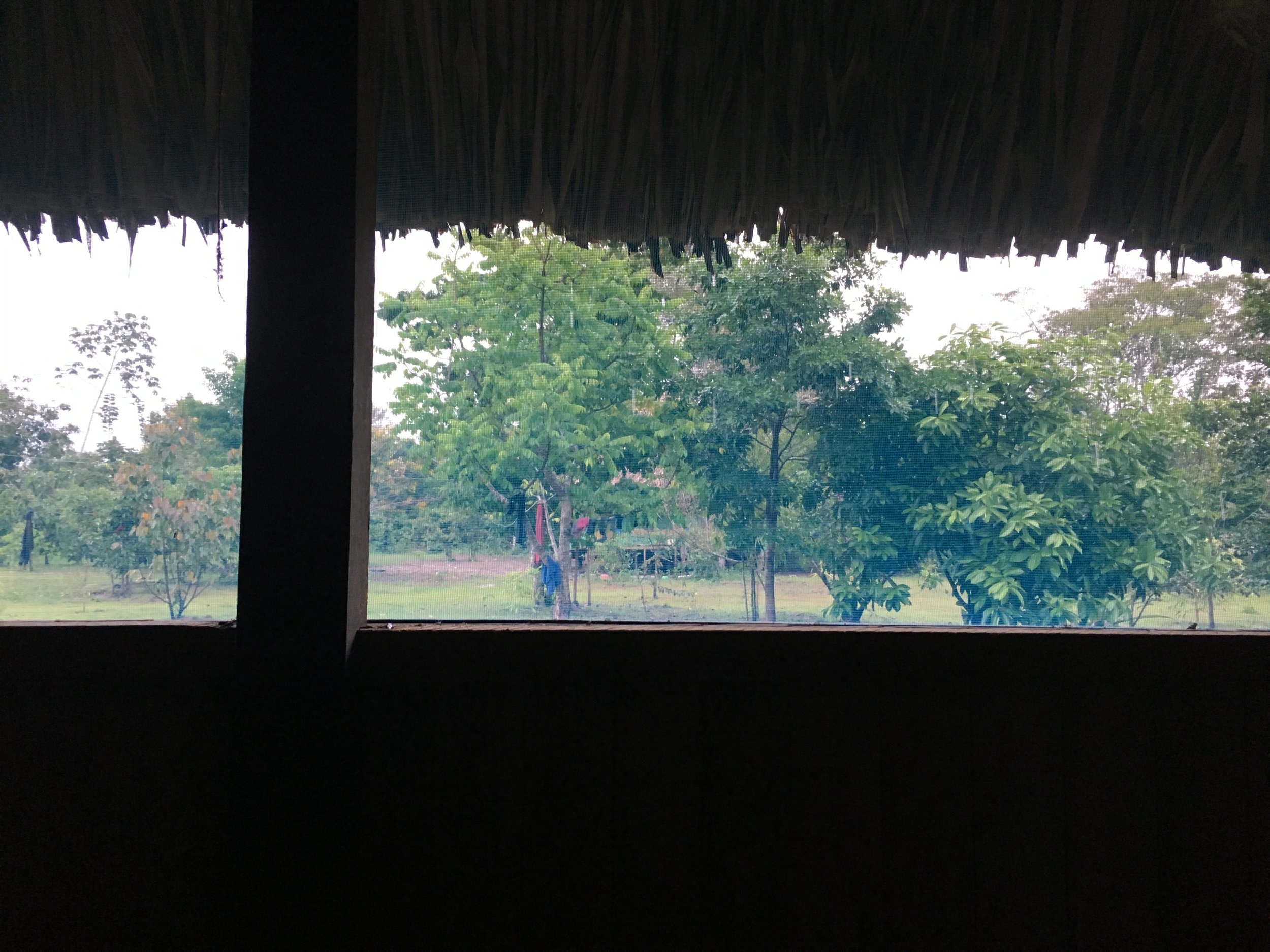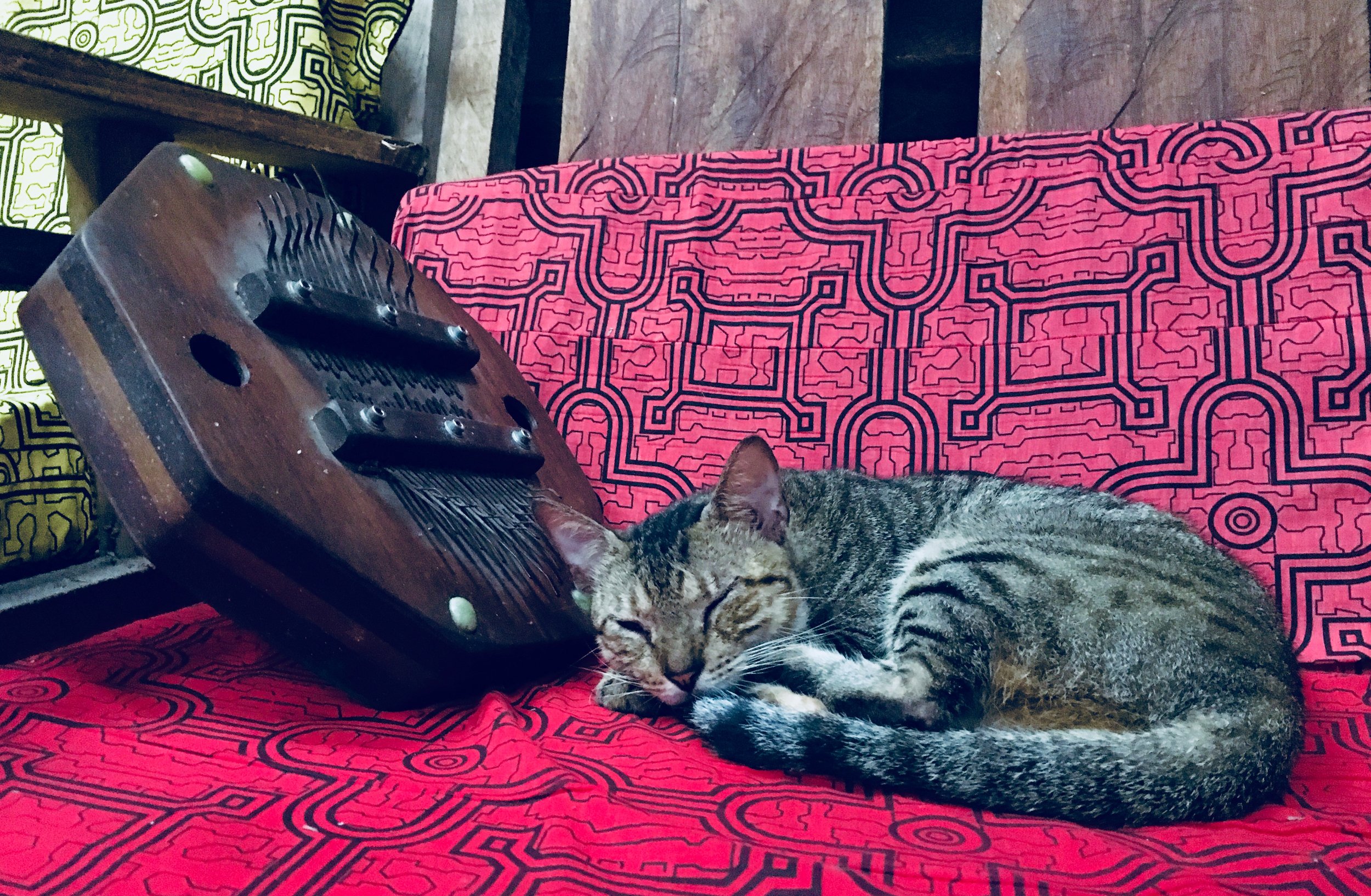A Day in the Life at an Ayahuasca Center in Peru
Welcome to the Peruvian Amazon, the heart of Shipibo shamanism and the home of Mother Ayahuasca. For thousands of years, Indigenous communities have explored spiritual healing through this sacred plant medicine. Join along for a day in the life of a shaman’s translator and ceremony facilitator.
My sweet, rustic home in the Amazon Jungle.
CONTEXT
From 2019-2020, I spent 5 months living in the Amazon Jungle of Peru, working as a translator at a plant medicine healing center.
Under the training of Maestro Ricardo Amaringo, I helped facilitate ayahuasca ceremonies and group integration circles, and translated Spanish-English conversations between the Shipibo shamans and retreat participants.
Here’s a glimpse into a typical day.
6 am
Wake up to the shameless, squawking symphony of roosters crowing outside my casita (wooden hut).
Walk to the bathroom, careful to avoid the occasional pile of dog poop half-buried in the sand. (I learned this lesson the hard way.)
“Hola, hola, hola,” a cartoonish voice chirps from above. It’s a parrot. “Hola, amor.” Hello, love. Not a bad way to start the day.
6 – 8 am
Write down last night’s dreams. Meditate, do yoga, or read. Enjoy the music of the jungle waking up around me.
8 am – 12 pm
Hang out in the common area, chatting with guests of the center (referred to as “passengers”) and playing with the eighteen (yes, eighteen) dogs who call the center home. The influx of four-legged friends has led to the joke that this place is equal parts dog sanctuary and shamanic healing retreat.
Meet Princesa, one of the 18 dogs living their best life in the Amazon Jungle of Peru.
12 pm
Lunchtime. The traditional ayahuasca diet requires abstinence from salt, sugar, dairy, caffeine, and red meat, as well as processed, fermented, fried, and spicy foods. These restrictions ensure that the body is as clean as possible when it meets the medicine.
Food being prepared at the ayahuasca center. Credit: Nihue Rao
Meals consist of rice, lentils, quinoa, pasta, plantains, potatoes, and fish. Apples and bananas are available for snacking, but you’d be hard-pressed to find citrus fruits anywhere in sight, as their acidic quality tends to interfere with the effects of ayahuasca.
Afternoon
Time moves differently in the jungle. Life hums along to a rhythm independent of clocks or calendars, and spontaneity trumps scheduling. There are a number of ways to pass an afternoon at the center, including:
A Walk
A few steps through the jungle will absolutely saturate the senses. Soak in the scent of lush green shrubbery; the sight of monkeys swinging from one branch to another; and the sound of parrots squawking in sing-song-y Spanish.
Views of the Amazon Jungle from my casita. Credit: Liz Zhou
A Read
Browse a bookshelf full of spiritual texts, covering every topic from soul retrieval to Stoned Ape Theory to the wandering sadhus of India. Keep in mind, though, that whatever content you consume just might trickle into your ayahuasca visions later that night.
Case in point: An afternoon spent perusing Sapiens: A Brief History of Humanity once segued into a ceremony filled with visions of cavemen dancing around a fire.
This is why the “ayahuasca diet” refers not only to food restrictions, but also to the avoidance of disturbing images, books, and media. Excessive usage of phones or Internet is discouraged as well, since external distractions inhibit one from attending more deeply to the inner process.
The ayahuasca diet cleanses on both a physical and psychological level, because what we feed the body is just as important as what we feed the mind.
A Bath
Pamper yourself, jungle-style, by basking in the fragrant waters of a fresh flower bath. With an aroma curiously reminiscent of the Vietnamese soup pho, the tub of leafy liquid contains an assortment of plants with purifying and protective qualities.
A Nap
The climate alternates between scorching sun and rampant rain, either of which are enough to lull anyone into a post-lunch slumber. Snuggle up inside a hammock for a snooze. Cat cuddles may ensue.
8 pm
Ceremony time. Gather in the maloca (ceremony space) for a meeting with Mother Ayahuasca.
Dress code: light-hued clothing, preferably all white. Dark colors are said to attract malevolent spirits — shitana, as the Shipibo shamans call it.
A peek inside the maloca, the sacred community space for ayahuasca ceremonies & integration circles. Credit: Eco Journeys
Everyone takes their seats — the main shaman, the 4-5 shamans training under him, and the 5-20 passengers staying at the center at any given time. One by one, each person receives their serving of medicine — a tiny shot glass containing an even tinier amount of thick, muddy brown liquid.
The lights are turned off, the single ceremonial candle is blown out, and everyone sits in silent darkness.
Within an hour, Mother Ayahuasca makes her presence known. The medicine brings on visions, insights, heightened emotions, and acute physical sensations such as nausea, tingling, increased heart rate, shivering, and sweating.
Across the next several hours, Mother Ayahuasca invites each passenger on a journey — through spiritual realms, through the memory palace of one’s own life history, and through dimensions of the dream world.
This is the television of the jungle, the show with no re-runs, the channel between plant and human consciousness. The plant speaks in a language that is not verbal, but rather emotional, visual, and somatic.
Silence gives way to the first icaros of the night — the songs of the shamans, melodies channelled to them from Mother Ayahuasca herself.
Icaros cleanse, purify, and protect the space and everyone in it. Sound healing swells through the maloca, summoning in benevolent spirits and shooing away the bad ones. The music is just as masterful a medicine as the plant brew itself.
Art by Pablo Amaringo, a Peruvian artist renowned for his intricate depictions of his visions from drinking the entheogenic plant brew ayahuasca.
Tobacco fumes fill the air as shamans puff on their ceremonial pipes. Vomit splashes into buckets as the purgative effects of the medicine kick in. The night hums by in a haze of smoke and song.
No two encounters with the medicine are the same. One woman receives a vision in which Mother Ayahuasca drowns her emotionally negligent partner, giving her the affirmation she needs to eliminate him from her life.
Someone else meets God — except his name isn’t God; it is “I Am,” and he takes her on a tour of the galaxy.
Another person witnesses a battle between the Spirit of Ayahuasca and the Spirit of Marijuana. Ayahuasca wins, and he adopts a newfound determination to stop smoking weed.
And then there is the occasional passenger who has no visions, with whom the plant communicates through insights, emotions, and/or physical sensations. Such is the mysterious intelligence of the medicine: Its teaching style varies according to the needs of each student. This is a mother who understands her children.
Sometime in the wee hours of the morning, the television of the jungle fades into a background hum.
Passengers return from their journeys, waking back up to the physical realm, minds buzzing from ten years’ worth of psychotherapy crammed into a single night.
Mother Ayahuasca bids them farewell. Until their next communion with higher consciousness, this tireless teacher will be waiting.
Art created at the ayahuasca center, in honor of Maestro Ricardo Amaringo. Credit: Liz Zhou
About the Author
Liz Zhou is holistic trauma therapist, coach, and speaker. She helps highly sensitive, neurodivergent adults and couples heal from the past and connect with their authentic selves. Liz’s specialties include EMDR, IFS, Brainspotting, psychedelic integration, and trauma therapy intensives for individuals and couples.
Looking for trauma-informed support before and after your ayahuasca ceremony experiences?
SCHEDULE A FREE CONSULTATION TO WORK WITH ME
Psychedelic Integration Therapy in Colorado | Coaching Worldwide
YOU MIGHT ALSO LIKE…
In this lively conversation, Jacqueline Rose and I discuss the power of entheogenic medicine and ceremony, from the perspective of culture & body. I share about my experiences working as shaman’s translator in the Peruvian Amazon & facilitating ayahuasca ceremonies in the Shipibo tradition.











